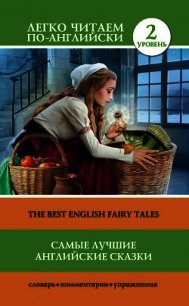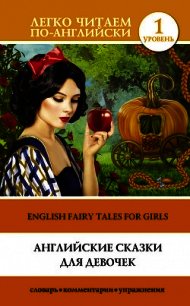English Fairy Tales - Jacobs Joseph (бесплатная регистрация книга .txt) 📗
Certainly the description of the Dark Tower of the King of Elfland in "Childe Rowland,” has a remarkable resemblance to the dwellings of the "good folk,” which recent excavations have revealed. By the kindness of Mr. MacRitchie, I am enabled to give the reader illustrations of one of the most interesting of these, the Maes-How of Orkney. This is a green mound some 100 feet in length and 35 in breadth at its broadest part. Tradition had long located a goblin in its centre, but it was not till 1861 that it was discovered to be pierced by a long passage 53 feet in length, and only two feet four inches high, for half of its length. This led into a central chamber 15 feet square and open to the sky.
Now it is remarkable how accurately all this corresponds to the Dark Tower of “Childe Rowland,” allowing for a little idealisation on the part of the narrator. We have the long dark passage leading into the well-lit central chamber, and all enclosed in a green hill or mound. It is of course curious to contrast Mr. Batten’s frontispiece with the central chamber of the How, but the essential features are the same. Even such a minute touch as the terraces on the hill have their bearing, I believe, on Mr. MacRitchie’s “realistic” views of Faerie. For in quite another connection Mr. G. L. Gomme, in his recent "Village Community” (W. Scott), pp. 75-98, has given reasons and examples for believing that terrace cultivation along the sides of hills was a practice of the non-Aryan and pre-Aryan inhabitants of these isles. [Footnote: To these may be added Iona (cf. Duke of Argyll, Iona, p. 109).] Here then from a quarter quite unexpected by Mr. MacRitchie, we have evidence of the association of the King of Elfland with a non-Aryan mode of cultivation of the soil. By Mr. Gomme’s kindness I am enabled to give an illustration of this.
Altogether it seems not improbable that in such a tale as “Childe Rowland” we have an idealised picture of a “marriage by capture” of one of the diminutive non-Aryan dwellers of the green hills with an Aryan maiden, and her re-capture by her brothers. It is otherwise difficult to account for such a circumstantial description of the interior of these mounds, and especially of such a detail as the terrace cultivation on them. At the same time it must not be thought that Mr. MacRitchie’s views explain all fairy tales, or that his identifications of Finns = Fenians = Fairies = Sidhe = “Pechs” = Picts, will necessarily be accepted. His interesting book, so far as it goes, seems to throw light on tales about mermaids (Finnish women in their "kayaks,”) and trolls, but not necessarily, on fairy tales in general. Thus, in the present volume, besides “Childe Rowland,” there is only "Tom Tit Tot” in his hollow, the green hill in “Kate Crackernuts,” the "Cauld Lad of Hilton,” and perhaps the “Fairy Ointment,” that are affected by his views.
Finally, there are a couple of words in the narrative that deserve a couple of words of explanation: “Widershins” is probably, as Mr. Batten suggests, analogous to the German “wider Schein,” against the appearance of the sun, “counter-clockwise” as the mathematicians say– i.e., W., S., E., N., instead of with the sun and the hands of a clock; why it should have an unspelling influence is hard to say. "Bogle” is a provincial word for “spectre,” and is analogous to the Welsh bwg, “goblin,” and to the English insect of similar name, and still more curiously to the Russian “Bog,” God, after which so many Russian rivers are named. I may add that “Burd” is etymologically the same as “bride” and is frequently used in the early romances for "Lady.”
XXII. MOLLY WHUPPIE.
Source.–Folk-Lore Journal, ii. p. 68, forwarded by Rev. Walter Gregor. I have modified the dialect and changed “Mally” into "Molly.”
Parallels.–The first part is clearly the theme of “Hop o’ my Thumb,” which Mr. Lang has studied in his “Perrault,” pp. civ.-cxi. (cf. Kohler, Occident, ii. 301.) The change of night-dresses occurs in Greek myths. The latter part wanders off into “rob giant of three things,” a familiar incident in folk-tales (Cosquin, i. 46-7), and finally winds up with the “out of sack” trick, for which see Cosquin, i. 113; ii. 209; and Kohler on Campbell, in Occident and Orient, ii. 489-506.
XXIII. RED ETTIN.
Source.–"The Red Etin” in Chambers’s Pop. Rhymes of Scotland, p. 89. I have reduced the adventurers from three to two, and cut down the herds and their answers. I have substituted riddles from the first English collection of riddles, The Demandes Joyous of Wynkyn de Worde, for the poor ones of the original, which are besides not solved. “Ettin” is the English spelling of the word, as it is thus spelt in a passage of Beaumont and Fletcher (Knight of Burning Pestle, i. 1), which may refer to this very story, which, as we shall see, is quite as old as their time.
Parallels.–"The Red Etin” is referred to in The Complaynt of Scotland, about 1548. It has some resemblance to “Childe Rowland,” which see. The “death index,” as we may call tokens that tell the state of health of a parted partner, is a usual incident in the theme of the Two Brothers, and has been studied by the Grimms, i. 421, 453; ii. 403; by Kohler on Campbell, Occ. u. Or., ii. 119- 20; on Gonzenbach, ii. 230; on Blade, 248; by Cosquin, l.c., i. 70-2, 193; by Crane, Ital. Pop. Tales, 326; and by Jones and Kropf, Magyar Tales, 329. Riddles generally come in the form of the “riddle-bride-wager” (cf. Child, Ballads, i. 415-9; ii. 519), when the hero or heroine wins a spouse by guessing a riddle or riddles. Here it is the simpler Sphinx form of the “riddle task," on which see Kohler in Jahrb. rom. Phil., vii. 273, and on Gonzenbach, 215.
XXIV. GOLDEN ARM.
Source.–Henderson, l.c., p. 338, collected by the Rev. S. Baring-Gould, in Devonshire. Mr. Burne-Jones remembers hearing it in his youth in Warwickshire.
Parallels.–The first fragment at the end of Grimm (ii. 467, of Mrs. Hunt’s translation), tells of an innkeeper’s wife who had used the liver of a man hanging on the gallows, whose ghost comes to her and tells her what has become of his hair, and his eyes, and the dialogue concludes
“SHE: Where is thy liver?
IT: Thou hast devoured it!”
For similar “surprise packets” see Cosquin, ii. 77.
Remarks.–It is doubtful how far such gruesome topics should be introduced into a book for children, but as a matter of fact the katharsis of pity and terror among the little ones is as effective as among the spectators of a drama, and they take the same kind of pleasant thrill from such stories. They know it is all make- believe just as much as the spectators of a tragedy. Every one who has enjoyed the blessing of a romantic imagination has been trained up on such tales of wonder.


